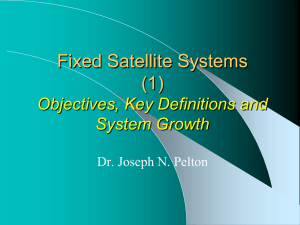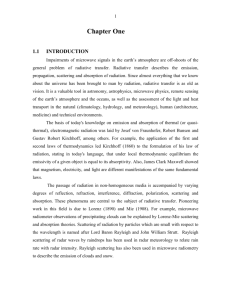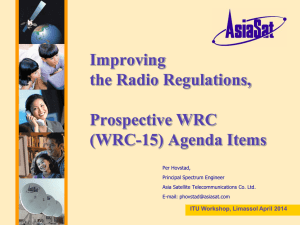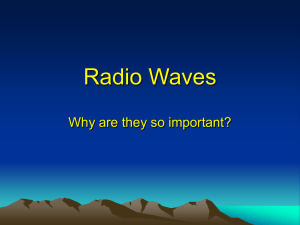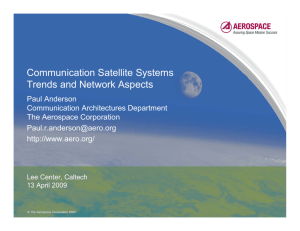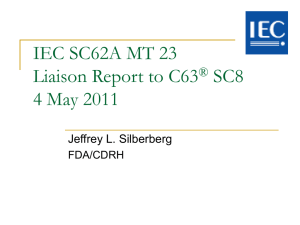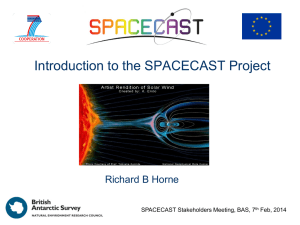EEE440 Modern Communication Systems
advertisement
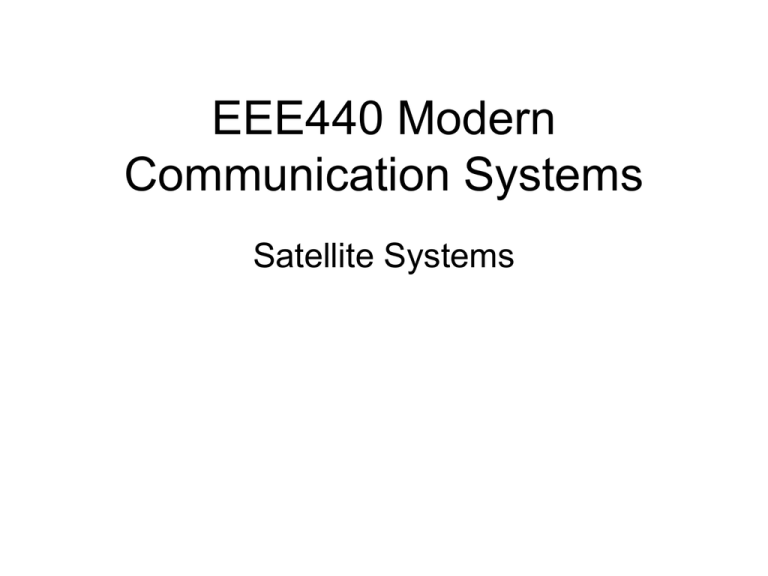
EEE440 Modern Communication Systems Satellite Systems System Architecture • Comprises a space segment, a ground segment and a control segment System Architecture • Space segment – contains one or several active and spare satellites organised in a constellation • Ground segment – consists of all the traffic earth stations. • Control segment – consists of all ground facilities for the control and monitoring of satellites (named as Tracking, Telemetry and Command (TTC) and also of the traffic, the Network Operation Centre (NOC) System Architecture • The space segment contains a number of subsystems – The Structural Subsystems - provides the mechanical base structure, shields the satellite from extreme temperature changes and micro-meteorite damage, and controls the satellite’s spin functions. – The Telemetry Subsystems - monitors the on-board equipment operations, transmits equipment operation data to the earth control station, and receives the earth control station’s commands to perform equipment operation adjustments. System Architecture – The Power Subsystems - consists of solar panels and backup batteries that generate power when the satellite passes into the earth’s shadow. – The Thermal Control Subsystems - protect electronic equipment from extreme temperatures due to intense sunlight or the lack of sun exposure on different sides of the satellite’s body System Architecture • The Attitude and Orbit Controlled Control Subsystems - consists of small rocket thrusters that keep the satellite in the correct orbital position and keep antennas positioning in the right directions. • Communication payload- made up of transponders capable of : – Receiving uplinked radio signals from earth satellite transmission stations (antennas). – Amplifying received radio signals – Sorting the input signals and directing the output signals through input/output signal multiplexers to the proper downlink antennas for retransmission to earth satellite receiving stations (antennas). System Architecture • The ground segment includes three classes of stations • Interface stations known as gateways which interconnect the space segment to a terrestrial network • Service stations such as hub/feeder stations which collect/distribute information from/to users via the space segment • User terminals such as handsets, portables, mobile stations, VSAT or USAT which allow direct access to the space segment • The control segment – exchange information with the TTC section on board and includes the NOC that manages the traffic and resources onboard the satellite System Design • Three specific aspects – Orbital configuration – Coverage – Air interface System Design • For telecom satellites, orbit is in general circular and classified according to altitude – LEO – 500 to 1700 km – MEO – 5000 km to 10000 km and over 20000 km – GEO – at 35800 km System Design • The GEO orbit has high delay (120 – 135 ms Earth-satellite) and high free space losses. • The earth (excluding the polar regions) can be covered with just three satellites • The LEO orbits has better delay performance ( 20-40 ms) and lower free space losses. • However, a large number of satellites is necessary to provide full coverage • MEO is in between LEO and GEO. • Usually used for navigation and localisation system such the GPS System Design System Design • The choice of altitude, A has strong impact on the constellation size, Ns System Design • The satellite is generally a simple repeater that amplifies and re-directs the signal • The carrier-to-noise ratio C/N0 is expressed by C 1 GR 1 PT GT N0 L TE k L = losses due to feeder, free space and atmosphere\ TE = system equivalent noise temperature K = Boltzmann constant Fixed Satellite Services • The FSS make use of the following bands – 6/4 GHz or C band : Around 6 GHz for the uplink and around 4 GHz for the downlink • Occupied by the oldest systems (Intelsat etc) and tend to be saturated – 8/7 GHz or X band: Around 8 GHz for the uplink and around 7 GHz for the downlink • Reserved by agreements btw administrations for government use – 14/12 GHz or Ku band: 14GHz UL and 12 GHz DL • Current operational developments (eg Eutelsat..) – 30/20 GHz or Ka band: 30 GHz UL and 20 GHz DL • Little present use but of raising interest due to huge bandwidth Mobile Satellite Services • The MSS make use of the following bands – VHF ( 137-138 MHz DL and 148-150 MHz UL) and UHF ( 400-401 MHz DL and 454-460 MHz UL ) are for non-GEO systems only • 1.6 GHz UL and 1.5 GHz DL – mostly used by geostationary systems such as Inmarsat • 2.2 GHz DL and 2 GHz UL – for satellite component of IMT2000 Mobile Satellite Services

